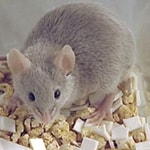Keeping Animals Out of Your Dallas Attic
We frequently receive calls about animals in the attic, including squirrels, mice, rats, raccoons, bats & more. Different sized animals present different challenges for Dallas area homeowners; small pest animals like rats or mice can get through holes as small as ½”. Medium-large sized critters are exceptional climbers and are easily able to climb up drains or leap from branches to get into attics (often through roof damage). Animals in the attic like bats and birds have an even easier journey into your Dallas home since they aren’t hindered by the need to climb—they can just fly right into your home through compromised window screens or open doors and make their way to your attic or another area of your home.
Hearing Noises in the Attic
The most accurate way to determine whether you have animals in the attic is by listening for weird unfamiliar sounds. Another indicator is the smell and stains that come from wildlife urine and feces. Wildlife animals, collectively, make thumping, scratching, chittering, squeaking and bumping noises in your Dallas attic. Many wildlife are nocturnal, so the noises may be more apparent in the evening hours.
Scratching Sounds in the Attic
Because attics are undisturbed and cozy due to the levels of insulation and heat sources, many wildlife seek out this area for nesting—including raccoons, rodents, bats & more. These pests most commonly take up residence in your Dallas attic during colder months to raise their babies. When nesting, these critters can be responsible for a significant amount of damage.
- Rats, mice, and birds all carry and can transmit diseases to humans and pets.
- Animals like squirrels and rodents chew wooden support beams, weakening the structural integrity of your Dallas home as time passes. Rodents also chew electrical wires, which is an accident waiting to happen.
- Bird nests are known to clog vents and gutters.
- Bats and raccoons are carriers of rabies.
Most notably when you have a larger infestation, it’s not difficult to realize that you have a wildlife issue in your attic. Sometimes a single animal accidentally falls into your vents or other enclosed space and they can’t get out, in which case you’ll hear plenty of distressed noises and scratching, so there’s no mistaking your wildlife problem. Dallas residents also explicably will find wildlife feces and urine accumulated in their attics if wildlife has been there.
Scratching noises in the attic or other warning signs should be addressed immediately. Because pest infestations can cause damage to your Dallas home and your health, it is wise to contact professionals like the team at Trutech of Dallas today.
Removing Animals from the Attic
Everyone can agree that animals inside your attic is a big problem because of their capacity to damage the structure of your home, leave pests and parasites behind, and cause stains and odors in your home, so homeowners shouldn’t attempt to handle wild animals. Contact a professional wildlife service like Trutech of Dallas to get rid of the critters in your attic. Our highly-trained wildlife removal experts can remove animals from attics, clean any contaminated areas, and secure possible points of entry so other wild animals don’t find their way inside again.
FAQ About Animals in the Attic
QUESTION:
I believe I have some type of critter in my attic. I hear something during the early morning hours. I heard something scratching right above where I sleep. Can you help? Can you give me a ballpark figure on the cost involved? Thank you very much.
ANSWER:
Trutech of Dallas can definitely solve your issue! This is one of the most common calls we receive. That said, the cost can vary greatly from one case to another, which is why we offer an inspection for a minimal fee.
When we get there for the inspection, we’ll likely need access to the attic to identify which type of animal we’re dealing with, and also to address the potential damage. Once we know the pest, we will need to thoroughly inspect the roof and foundation to determine the location of all of the potential entry points.
We will likely need to trap in order to remove the animals, seal all of the entry points, and use a type of control program that varies dependent upon the target pest to ensure that they stay out. If the attic has been soiled, we offer attic treatments and removal if possible. This is a process that usually takes one to three weeks.
QUESTION:
Every night for the past 2 weeks, I’ve heard scratching, gnawing, and chewing in the attic. It starts around 11PM and goes until 6AM. I am not sure if it is a rat/mouse. It sounds heavier and is confined to one area. It also seems to be getting more active and definitely sounds like it’s doing extensive damage.
ANSWER:
You could be dealing with a number of nocturnal animals, but most likely it is a raccoon. Regardless of the animal, it should be handled promptly by one of our professionals. After we schedule an inspection, three phases of the job will need to be done; trapping, exclusion, and sanitization.
Sanitization is important because wildlife carry fleas and ticks on their bodies, which will spread in the home and look for new hosts once the animals are gone. They also carry ecto parasites in their feces which will cause health issues to people living in the home if not addressed. We will remove all feces and treat the entire attic for fleas, ticks, and ecto parasites so that it poses no threat for any members living in the home.
QUESTION:
My husband and I recently noticed scurrying in our attic in the evening/night. We obviously would like them removed, but would prefer to do so in a non-lethal manner so the animals may be reintroduced to the wild. I wanted to find out if that was the type of service you were able to offer.
ANSWER:
Yes, we offer non-lethal removal in certain situations. In our area there are specific species that we are required by law to euthanize. With what you’ve described we may be dealing with flying squirrels. They are a nocturnal species of squirrel notorious in the Dallas area for getting into attics. Flying squirrels are one species in which we can use non-lethal means of removal when paired with exclusion to prevent their re-entry.



